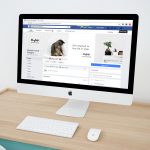Written By: Nicole Clark
To create effective web page content, it is not enough to know what you want to say. You have to make sure that anyone reading it will care about it. To understand the motivators and forces that change a shrug to avid interest, you have to understand your customers’ wants, needs, and desires.
It is not about you – it’s about your customers!
Many companies write their website text as if they are talking to themselves. This type of writing reads like a paean to the glories of the company or product. You can always spot such writing by the number of times the company refers to itself, and how the text reads as if it is all about them… and not about you.
The problem is that most company owners and entrepreneurs gravitate towards this type of writing. It is easy to write about what you know, and as an entrepreneur or small business owner, you are passionate about your business, your products or your services. Yet what you are interested in the most – your business – is not what interests people reading your text, or at least not yet. They have to get to know and like you first, but in order for them to even take the first step and get to know you online; they must be attracted by something you are saying in your marketing materials or website.
So consider this: what interests your customers?
What do they want and need to know?
Begin with the benefits to them in mind, and put yourself in your customers’ shoes. If you can get into your customers’ mindset and understand what is motivating them to purchase your products or services, you’ve found an important clue to help you write compelling marketing messages.

Create a List of Features and Benefits
I like to begin any copywriting project starting a features and benefits list. Features are facts. In many cases, features do not sell the product, but customers still need to know the facts about the product in order to make a buying decision.
When writing marketing copy, benefits are usually what interests the reader first. That is because benefits are about their wants, needs, and desires. Effective marketing messages usually incorporate the benefits of the product first and are backed up by features.
When I begin with my feature list, I next write a corresponding benefit statement next to the feature. A feature and benefits list for a blue ballpoint pen may look like this:
Feature: Blue ink
Benefit: Blue ink is a standard ink color that’s appropriate for business or personal writing.
This pen can be used anywhere and anytime when you need a dependable writing instrument.
The benefits of blue ink (a feature) are an appropriate color for multiple uses (benefit) and dependable performance (benefit).
If transforming this benefit statement into a marketing message, it would need to be reworked so that it is clear, simple and compelling. “Get the New Blue Pen for Dependable Performance” might work, or even a headline with a compelling price – “Just 99 cents for Blue Pens with Dependable Performance.”
This is a very simplistic example, but it should offer you enough information to understand the differences between features and benefits. Benefit concepts can be worked into headlines and body copy equally; including the supporting feature with the benefit, statement helps make messages clear.
Writing from the benefit statements takes time and practice. A skilled marketing writer or copywriter can save you time and effort, or you can hone your own writing skills and practice creating benefit statements. Be sure to test and analyze any new statements, and be prepared to tweak or adjust them until you see the desired results.
Author Bio:
Nicole is a freelance writer. Deeply engaged in studying education topics. She has experience in writing works for famous media and educational blogs. Nicole has her own blog on Blablawriting.com and also helps students with writing essays and dissertations. She believes that the right choice of the topic is 90% success.



